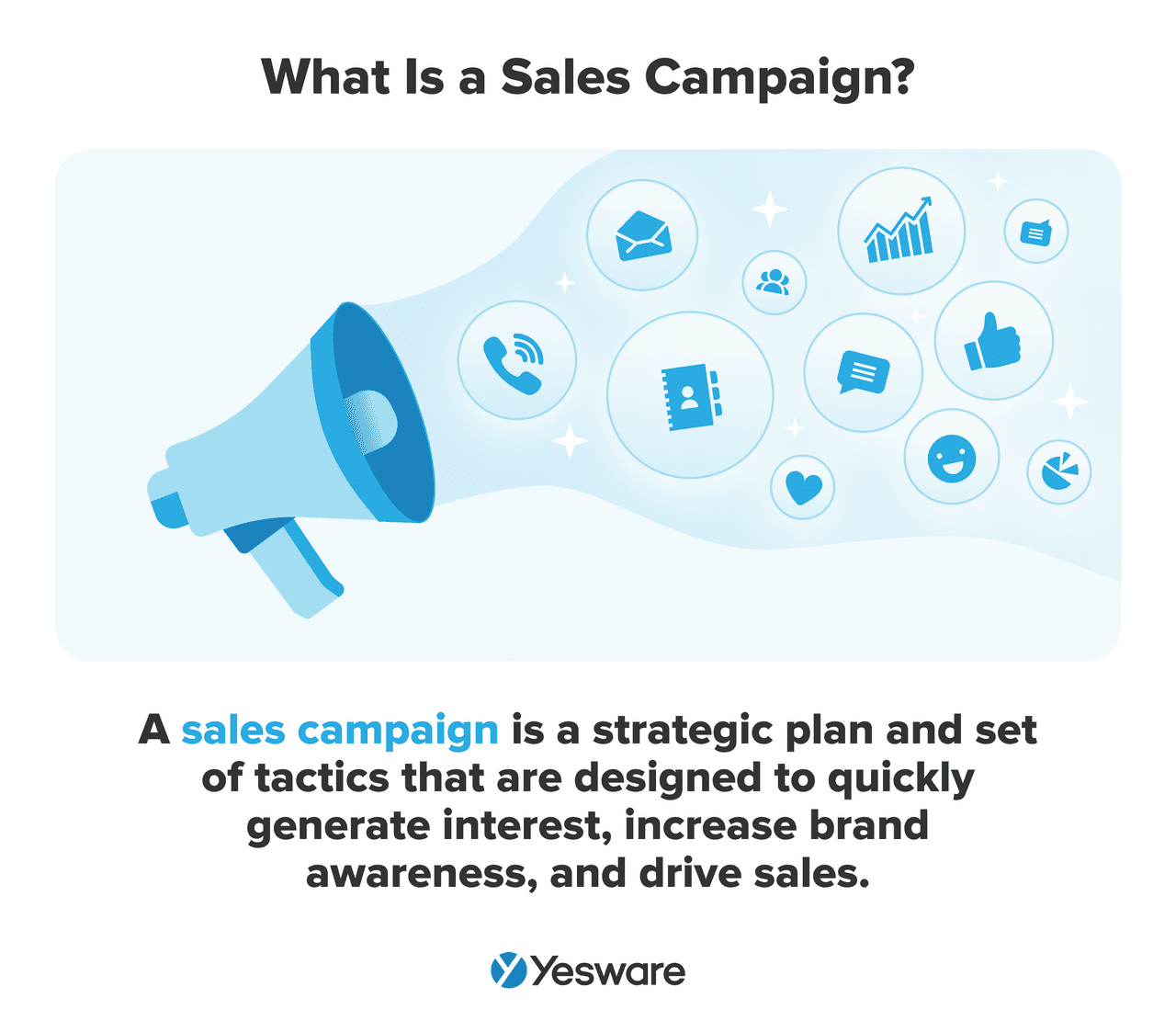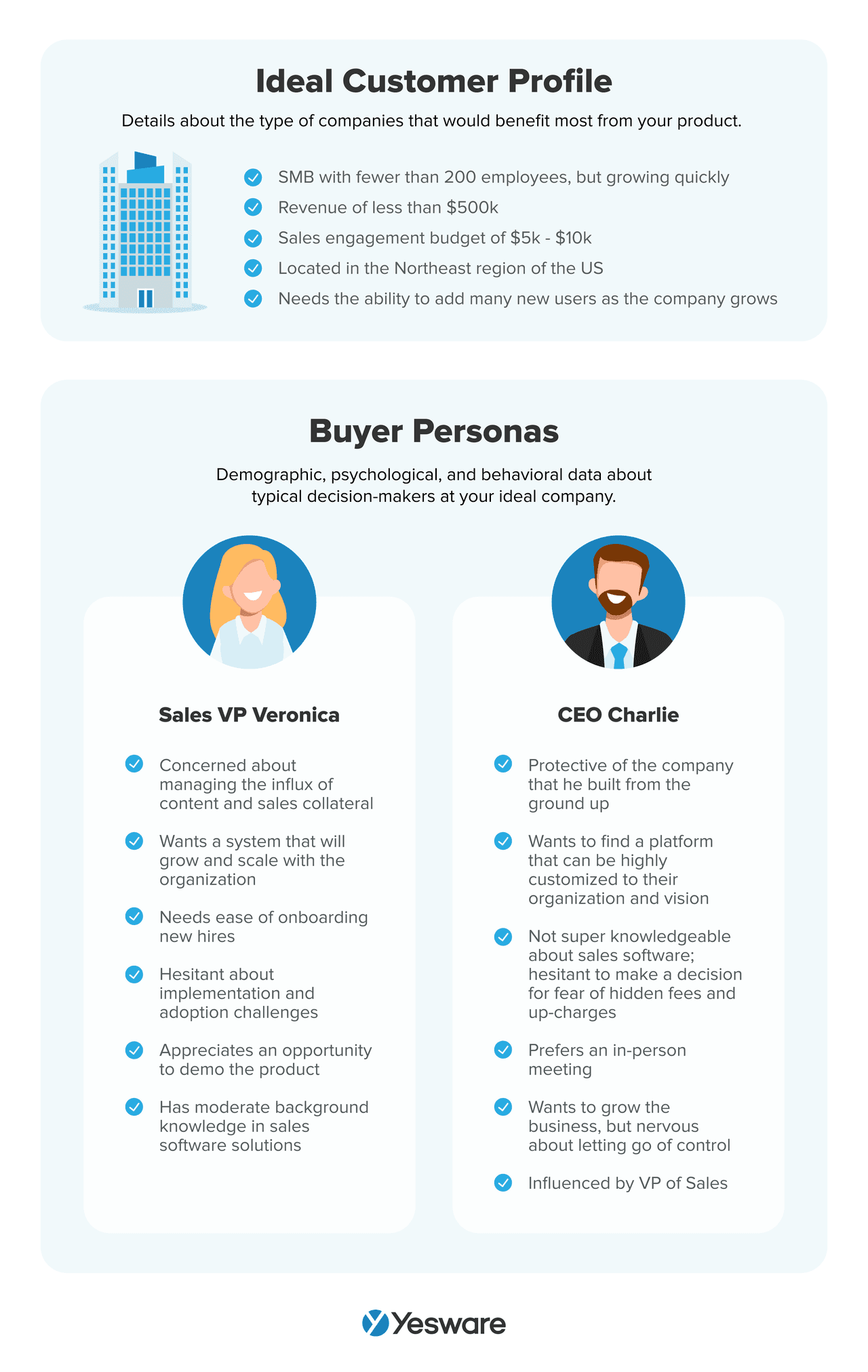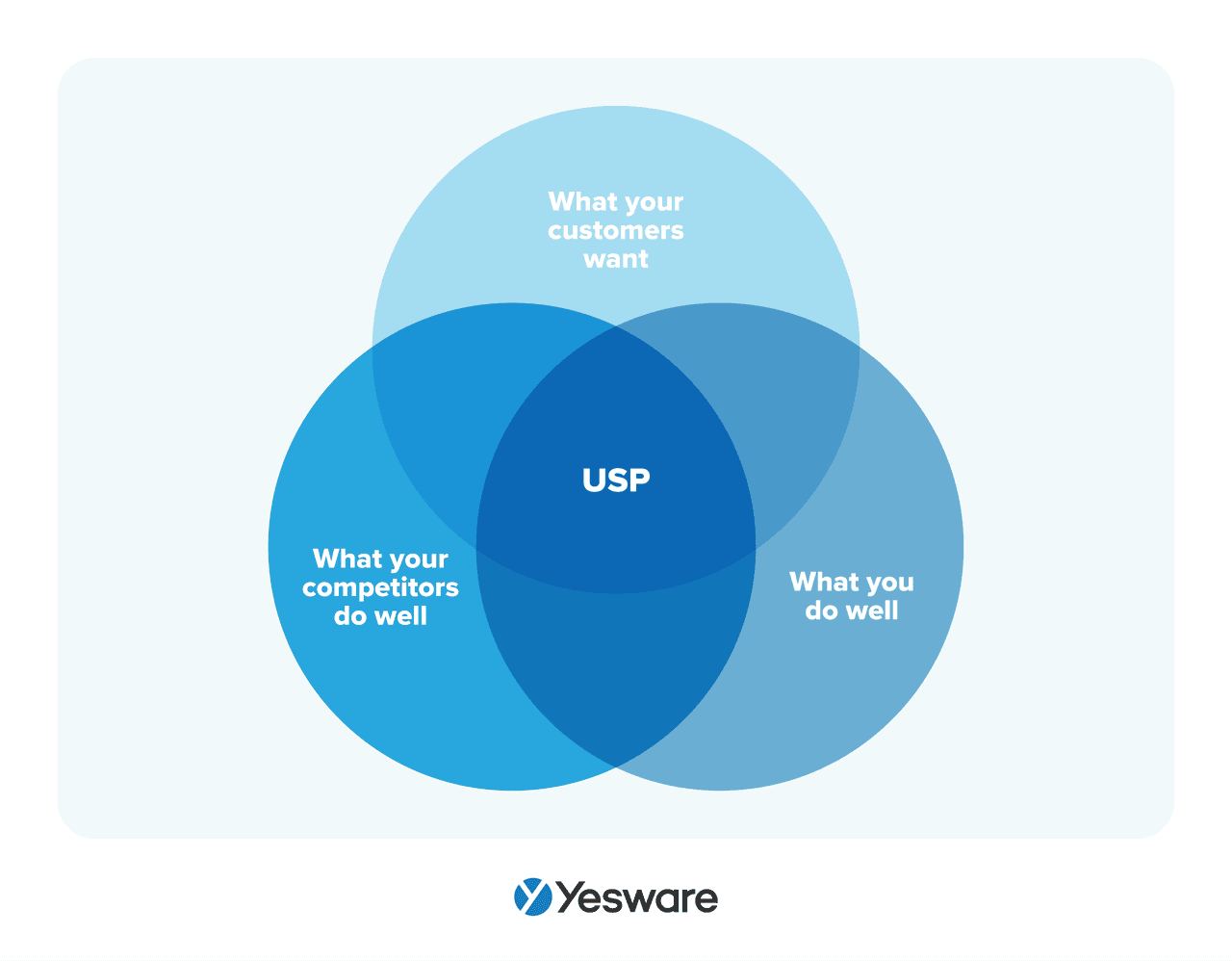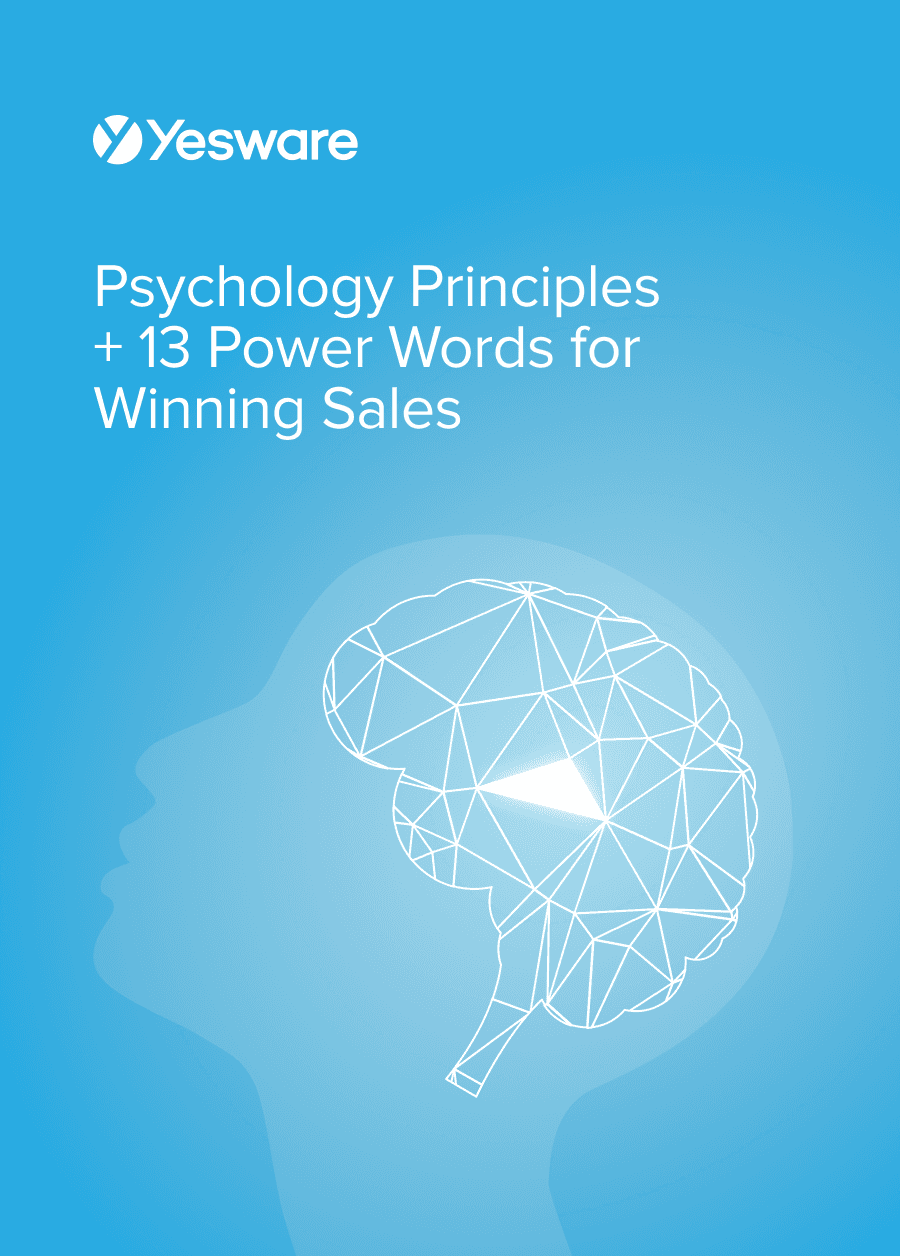The Ideal Sales Campaign [Key Elements + Channels]
Casey O'Connor
A sales campaign is a short-term strategy and set of sales tactics that are designed to motivate salespeople to quickly meet sales targets and increase demand for a product or service.
These campaigns can range in a variety of simplicity, longevity, and profitability. A limited-time buy-one-get-one-free (BOGO) offer is one example of a sales campaign. Some teams offer discounts for certain professions, like teachers or military affiliations. A cashback offer is another example of a sales campaign.
It’s important to note that, although sales campaigns are short-term, they also still need to contribute to the organization’s larger sales goals. Cashback is certainly enticing to potential customers, but how long can that tactic maintain profitability? Some sales campaigns can become counterproductive to larger sales goals if they aren’t designed carefully.
In this article, we’ll go over everything you need to know about the ideal sales campaign, including what it is, the most important elements to consider when creating one, and how to approach the many channels available to distribute your campaign.
Here’s what we’ll cover:
- What Is a Sales Campaign?
- Key Elements of a Sales Campaign
- Sales Campaign Channels
- How to Create a Sales Campaign
What Is a Sales Campaign?
A sales campaign is a strategic plan (and the sales tactics involved) for selling more products or services in a short period of time.
Sales campaigns are typically short-term initiatives and are designed to quickly generate interest, increase brand awareness, drive sales, and boost revenue. They are particularly effective for the following scenarios:
- Launching or promoting a new product
- Increasing revenue
- Advertising an upcoming event
- Generating brand awareness
- Asking for customer feedback
- Reducing overstock and inventory
- Making a final push to meet quarter-end or year-end goals
A great sales campaign should be motivating for sellers and exciting and incentivizing for buyers. When done right, they can increase sales, attract new customers (while helping retain existing ones), generate a quick profit while reducing inventory, and speed up the sales cycle.
Key Elements of a Sales Campaign
The specific strategic overview and tactics you choose for your sales campaign will ultimately depend on your organization’s overarching goals, the needs of your target market, and the strengths of your sales team.
That being said, there are some components of sales campaigns that are non-negotiable, regardless of the factors listed above. Make sure that all of the following elements are clearly defined with the documentation of your sales campaign.
Clear Objectives
Just like much everything else with sales, success starts with setting clear goals.
Before you create your sales campaign, make sure your team has a common and thorough understanding of its goals.
In order to do this step justice, use the SMART goal framework to guide the process.  Your CRM can also be a valuable resource here. Look back at your existing data to see if you can identify any historical patterns, trends, or peaks in sales that can help inform your next sales campaign.
Your CRM can also be a valuable resource here. Look back at your existing data to see if you can identify any historical patterns, trends, or peaks in sales that can help inform your next sales campaign.
The more data you can add to the decision-making process, the better.
Target Audience
Another foundational element for any sales campaign is a well-defined target audience.
Revisit your ideal customer profile (ICP) and buyer personas (or work with marketing to create these profiles, if you haven’t already) and make sure they’re accurate and up-to-date.  This information is vital for all sales efforts — not just sales campaigns — and will help you personalize the sales process. And with research showing that over 70% of buyers fully expect personalization while they consider their buying options, it’s a step no team can afford to skip.
This information is vital for all sales efforts — not just sales campaigns — and will help you personalize the sales process. And with research showing that over 70% of buyers fully expect personalization while they consider their buying options, it’s a step no team can afford to skip.
Messaging and Value Proposition
Part of the appeal of a sales campaign is that it’s a highly motivating, uber-engaging burst of sales enthusiasm.
The way to translate that enthusiasm into a conversion factor is by ensuring that every member of your sales team can clearly convey the value proposition and unique selling proposition of your offer.  Remember: it’s very likely that your product has a plethora of unique and helpful features and benefits. But it’s important to take the time to define a select few depending on the specific prospect in the sales conversation — frame the USP around each buyer’s pain points and goals.
Remember: it’s very likely that your product has a plethora of unique and helpful features and benefits. But it’s important to take the time to define a select few depending on the specific prospect in the sales conversation — frame the USP around each buyer’s pain points and goals.
Channels and Tactics
In today’s sales world, the number of ways in which sellers can reach customers seems to grow every day. But more sales channels doesn’t always mean better outreach.
When it comes to outreach tactics and channel distribution, the most important thing to consider is your target audience.
What kind of outreach do they prefer? Some customers, for example, won’t answer the phone for a number they don’t recognize, so email or social media would probably suit this segment best. Others spend a lot of their free time on Facebook.
If sales teams know this, they can put themselves directly in front of their audience on the platform and capitalize on their attention.
The point here is to prioritize the sales channels that are most relevant to your target customer.
Timeline and Schedule
The SMART goal process will help with this step, but it’s still worth noting that any good sales campaign should be time-bound and, ideally, of a short duration (usually a month or a quarter).
This helps all participants stay engaged and motivated, and can help ensure it generates a profit.
Budget
Sales campaigns can run the gamut when it comes to budget. As important as it is to spend only according to what your team can prioritize, it’s equally as important to communicate those financial constraints — even at just an overhead level — to those participating in and/or responsible for the campaign.
Be sure to account for any costs associated with advertising, content creation, sales promotion materials, and any other expenses involved in running your campaign. These will all play a part in how much ROI you can expect to generate from your campaign.
Metrics and Measurement
Be as specific as you can about which sales metrics you’ll be measuring to evaluate the success of your campaign, and which KPIs you’ll be targeting. Some common sales campaign metrics include:
- Conversion rates
- Sales revenue
- ROI
- Customer acquisition cost (CAC)
Part of defining your campaign metrics also means identifying how often data should be collected, where it should be stored, and when (and by whom) it will be analyzed.
Testing and Optimization
Sales campaigns are fast and furious — which means they need to be highly effective from start to finish.
One way to ensure that each of your chosen sales tactics deserves a spot in the roster with such minimal time is to run A/B testing and optimize your approach until it runs like a well-oiled machine.  It’s unlikely that your sales campaign will be successful on the first run — and that’s perfectly normal. The way to create an outstanding campaign is to continuously monitor its performance and adjust as needed until it’s functional and productive.
It’s unlikely that your sales campaign will be successful on the first run — and that’s perfectly normal. The way to create an outstanding campaign is to continuously monitor its performance and adjust as needed until it’s functional and productive.
Team and Resources
Everyone involved in the sales campaign needs to be aware of their role and responsibilities.
It goes without saying that many people on your sales and perhaps marketing teams will be part of the sales campaign process. But you may also need to source external talent as well, such as graphic designers, copywriters, etc.
Follow-Up and Closing
Cleanly closing a sales campaign is the final non-negotiable step of the process. After completing the campaign, make sure your data is collected, promises are fulfilled, and buyers are happy.
Tip: Persuade buyers with a little help from psychology. Grab our free ebook below.
 Psychology Principles + 13 Power Words for Winning SalesData-backed psychological principles, nonverbal cues, and persuasive phrases to win more deals.
Psychology Principles + 13 Power Words for Winning SalesData-backed psychological principles, nonverbal cues, and persuasive phrases to win more deals.
Sales Campaign Channels
The sales campaign elements outlined above should be applied to any campaign, regardless of the marketing channel your team uses to execute it.
As you get to know your target market, consider the various channels that are available for your sales campaign. 
Email is one of the most popular channels for sales campaigns, and for good reason — it’s one of the most widely-used methods of communication with an outstanding ROI.
One of the things that makes email such an effective sales channel is that sellers can target multiple customer segments at once, all with personalized messaging. This allows sales reps to nurture leads based on their level of readiness, rather than pushing ahead according to the rep’s timeline.
Social Media
Social media is another extremely popular sales channel, and again for very good reason.
Platforms like Facebook, Twitter, LinkedIn, Instagram, and Pinterest all offer easy ways to promote products or services, run targeted ads, and meet and engage with the target market through posts and interactions.
Direct Mail
Although some sales reps consider it somewhat outdated, there’s still a lot to be said about direct mail as a sales channel.
The key is to avoid thinking about direct mail as annoying junk flyers and get creative. There are plenty of valuable B2B direct mail options that may appeal to your target audience, such as gifts and coupons.
Still, direct mail isn’t the right channel for every business; it’s most effective for local or niche campaigns.
Telemarketing and Cold Calling
Cold calling gets a bad rep too, but it can be surprisingly productive and even lucrative for teams who take the time to optimize their processes.
For sales reps who are effective at quickly building solid rapport, the short awkwardness of a cold call is well worth the opportunity to introduce the product, answer questions, and schedule meetings or demos.
In-Person Events
In-person events like trade shows, conferences, live product launches, and other face-to-face networking opportunities are great ways to establish relationships and move deals forward.
Webinars and Online Events
On the other hand, webinars and other virtual events can also be a great way to showcase products or services to a large number of prospects. These can be very cost-effective and widely appealing, as many buyers in a post-pandemic world prefer to do most of their business online.
SMS and Messaging Apps
For certain market subsets, direct messages via SMS or messaging apps like WhatsApp, Facebook Messenger, or Instagram DMs, can offer just the right amount of personal touch and show a level of customer support that can feel above and beyond.
Keep in mind, though, that it’s important to know your target buyer, as not all will welcome a personal text or Facebook message from a sales rep.
Print Advertising
Traditional print media methods like newspaper and magazine ads are another method that sales reps tend to snub, but remember (again): there’s a market for everything.
For certain target audiences and industries, newspapers and magazines are their version of Facebook. Some generations “hang out” on Twitter, while others never miss the Sunday paper. It’s all about knowing your market.
Affiliate Marketing
Affiliate marketing can be surprisingly effective for B2B organizations.
With affiliate marketing, B2B organizations can partner with other businesses or even individual influencers (look for ones who have influence in your sphere, not just the trendiest ones on Instagram!) who promote their products in exchange for a commission.
Referral Programs
Referrals are like gold for B2B companies.
Referral programs are a popular sales campaign channel because there are a variety of formats that teams can consider to meet the needs of their particular targets. They are also relatively straightforward to maintain once they’re up and running.
A strong referral program is a self-perpetuating success; referrals can grow exponentially once you fine-tune the referral system.
How to Create a Sales Campaign With Yesware
Yesware’s multi-channel campaigns give sales reps the power to juggle many customer segments at once, while delivering the right kind of outreach at the right moment to meet each group’s unique needs. With channel options like email, phone, and LinkedIn InMail, there’s a way in for every buyer.
To send email campaigns in Yesware, add recipients via CSV upload, Salesforce import, or directly in the table below.

Then, you can pick between various touch types and write your message or insert a template. You can customize emails automatically with dynamic fields or one at a time for each specific recipient.

You can add multiple touches and set custom times and cadences between each touch. Your follow-up emails will automatically go out when prospects don’t respond to your first outreach, and Yesware will automatically remove recipients who reply or book a meeting.

And that’s it! Click “Start Campaign,” and your messages will be sent at the designated time and cadence set.

The best part: all emails are tracked and monitored. Our Reporting & Analytics gives you the data you need to determine the effectiveness of each of your campaigns, as well as who your most interested prospects are.
Conclusion
Sales campaigns can be used for a wide range of purposes, including product launches, seasonal promotions, lead generation, customer retention, and more.
The specific strategies and tactics employed in a sales campaign will depend on the nature of the product or service, the target audience, and the overall marketing strategy of the business.
Successful sales campaigns are often the result of careful planning, execution, and continuous optimization based on real-time data and feedback.
Get sales tips and strategies delivered straight to your inbox.
Yesware will help you generate more sales right from your inbox. Try our Outlook add-on or Gmail Chrome extension for free, forever!
Related Articles
Casey O'Connor
Casey O'Connor
Casey O'Connor
Sales, deal management, and communication tips for your inbox
![The Ideal Sales Campaign [Key Elements + Channels]](/blog/_next/image/?url=https%3A%2F%2Fwww.yesware.com%2Fwp-content%2Fuploads%2F2023%2F10%2Fsales-campaign-yesware.jpg&w=1984&q=75)
